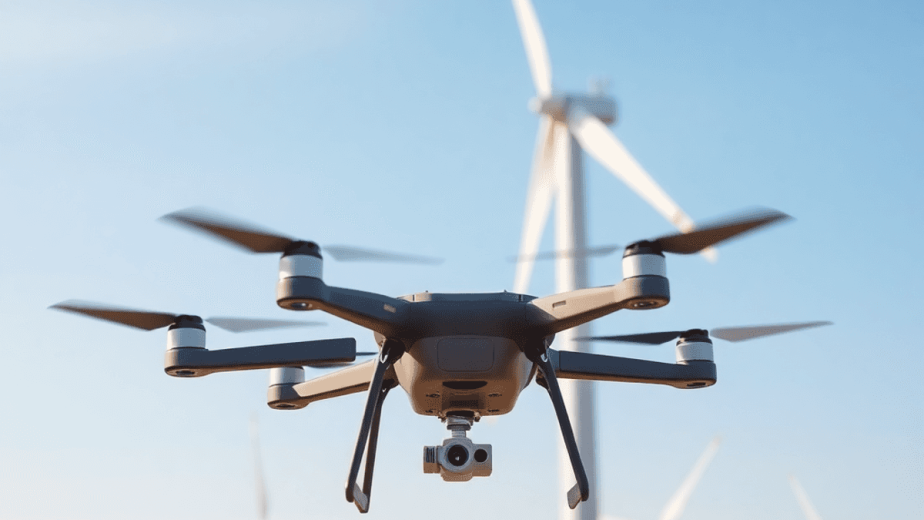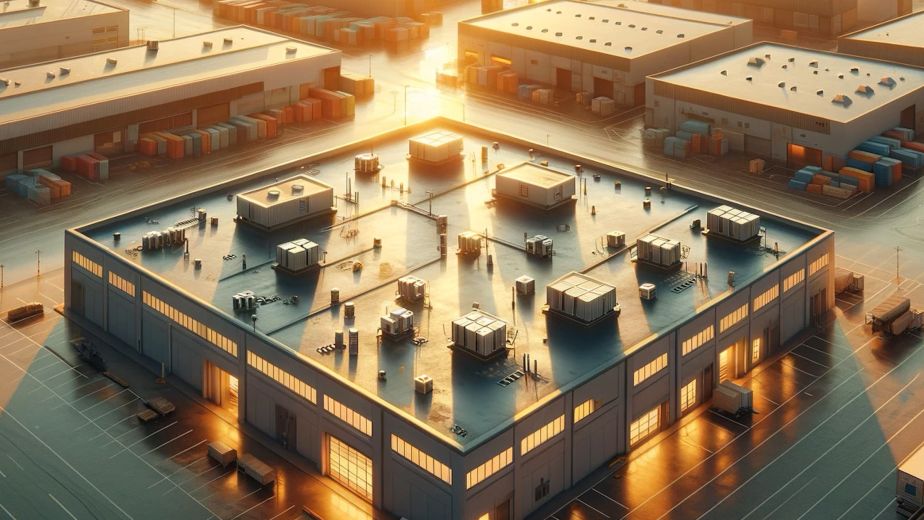Introduction
Drone technology has changed the way infrastructure inspections are done, providing new solutions for different industries. Drones are now used to inspect transmission towers, bringing benefits such as improved safety, faster inspections, and more accurate data.
In this article, we will explore the key reasons why using drones for inspecting transmission towers is advantageous. We’ll discuss:
- How drones enhance safety measures
- The speed and efficiency gains achieved through drone inspections
- The cost savings associated with using drones
- The ability of drones to collect comprehensive data
- The power of real-time analytics in decision-making
- The role of advanced technologies in improving inspection processes
- How drones can help with environmental compliance
- The support they provide for predictive maintenance strategies
By understanding these benefits, we can see how drone technology has the potential to revolutionize transmission tower inspections and improve utility management practices.
1. Safety Improvements with Drone Inspections
Drone inspections significantly enhance safety in the inspection of transmission towers, particularly when working near high-voltage lines. The application of drone technology offers several advantages:
-
Reduced Personnel Exposure: Drones minimize the need for workers to physically access dangerous areas, lowering the risk of accidents and injuries.
-
Minimized Accidents: The use of drones to inspect towers reduces the likelihood of electrocutions and falls, ensuring a safer working environment.
-
Enhanced Safety Protocols: Integrating drones into inspection routines allows utilities to implement advanced safety protocols. Drones can be equipped with thermal imaging cameras and other sensors, providing real-time data without putting personnel at risk.
By utilizing drones, utilities can create a safer operational framework that prioritizes employee well-being while maintaining essential infrastructure. This innovation represents a transformative shift in how safety is approached in infrastructure management.
2. Speed and Efficiency Boosts from Drones
Drones significantly enhance inspection speed and efficiency compared to traditional methods like manual inspections or helicopters. Key advantages include:
-
Rapid Inspection Turnaround: Drones can complete inspections in a fraction of the time required for manual or aerial methods. This allows utilities to receive timely data, facilitating quicker decision-making.
-
Broad Coverage Ability: Equipped with advanced imaging technology, drones can quickly survey extensive areas, capturing high-resolution images and data without the limitations of physical access. This capability results in substantial time savings for utilities.
-
Streamlined Processes: With automated flight paths and real-time data transmission, drones reduce the need for on-site personnel during inspections. This enables utility companies to allocate resources more effectively while enhancing their operational efficiency.
Implementing drone technology transforms inspection approaches, providing utilities with faster, more efficient solutions that drive productivity and responsiveness.
3. Cost Reduction Benefits of Using Drones
Using drones for transmission tower inspections offers significant cost savings for utility companies.
How Drones Save Money
- Lower Labor Costs: Traditional inspection methods often require a large team of workers, leading to higher expenses. With drones, inspections can be done with fewer people.
- Reduced Inspection Costs: Drones are much cheaper to operate compared to manual inspections and helicopter flights. Manual inspections involve multiple crew members, safety gear, and potential delays in operations. Helicopter inspections come with high costs for fuel and maintenance.
- Long-Term Financial Benefits: By using drones for inspections, utility companies can expect long-term savings. This includes reducing the need for major repairs through proactive maintenance and extending the lifespan of assets by identifying issues early on.
Streamlining Budgets and Improving Accountability
By adopting drone technology, utility companies can make their budgeting processes more efficient and accountable. The potential for significant cost savings makes drones an attractive choice for managing infrastructure.
4. Comprehensive Data Collection Capabilities with Drones
Drones equipped with advanced technologies enable the collection of a wide range of data during transmission tower inspections. Key types of data include:
- Infrared Sensors: Identify heat anomalies that may indicate electrical issues or component failures.
- LiDAR (Light Detection and Ranging): Provides high-resolution 3D mapping for precise measurements and structural analysis.
These capabilities contribute significantly to data accuracy, allowing for more detailed assessments of each tower’s condition. Comprehensive data collection is crucial for effective maintenance planning and timely issue detection.
By analyzing this rich dataset, utilities can prioritize repairs, enhancing reliability and operational efficiency. In this context, drones serve as powerful tools in creating a proactive maintenance strategy, enabling organizations to address potential problems before they escalate into costly failures.
5. Real-Time Analytics for Immediate Decision-Making
Drones play a crucial role in enabling real-time data processing and analysis during transmission tower inspections. The speed at which drones capture and transmit data allows utilities to make immediate decisions regarding maintenance needs.
Key features include:
- Rapid Data Acquisition: Drones collect high-resolution imagery and sensor data, facilitating quick assessments of the condition of transmission towers.
- Cloud-Based Analytics Integration: By integrating drone inspection data with cloud-based analytics platforms, utilities gain access to enhanced insights. This capability enables detailed reporting and visualization, improving decision-making processes.
Real-time analytics empower utility managers to address potential issues proactively, reducing downtime and optimizing maintenance schedules. The combination of drone technology and advanced analytics provides a comprehensive approach to infrastructure management, ensuring reliability and safety in operations.
6. Advanced Technologies Driving Innovation in Inspections
The integration of advanced technologies significantly enhances the effectiveness of drone inspections for transmission towers. Key innovations include:
- 3D Models: Drones equipped with imaging technology create detailed three-dimensional representations of assets. These models allow for precise visualization, enabling inspectors to identify potential issues from various angles without physical access.
- Digital Twins: This technology creates virtual replicas of transmission towers, allowing utilities to simulate conditions and predict performance under different scenarios. Digital twins enable comprehensive analysis that informs maintenance strategies.
- Machine Learning Algorithms: By analyzing historical and real-time drone-collected data, machine learning enhances accuracy over time. These algorithms identify patterns and anomalies that may not be apparent during standard inspections.
These technological advancements empower utilities to conduct thorough assessments efficiently, leading to improved decision-making and proactive maintenance strategies. The shift towards embracing these innovations marks a significant leap forward in the management of infrastructure integrity.
7. Environmental Compliance Assistance Through Drone Monitoring
Compliance with regulatory standards is crucial in the energy sector, particularly concerning the environmental impacts of transmission towers. Adapting to evolving regulations demands innovative solutions for effective monitoring.
Drones play a significant role in environmental monitoring by:
- Collecting data on vegetation encroachment and habitat disruption
- Assessing bird electrocution prevention measures during inspections
- Monitoring compliance with environmental regulations in real-time
With their aerial capabilities, drones can cover vast areas quickly and gather critical information that enhances utilities’ ability to adhere to regulations seamlessly. This integration of drone technology ensures that utilities maintain not only safety and operational efficiency but also uphold their responsibility towards environmental stewardship. By leveraging drones, organizations can navigate regulatory landscapes more effectively while minimizing their ecological footprint.
8. Supporting Predictive Maintenance Strategies with Drone Technology
Drones play a crucial role in improving predictive maintenance strategies for utilities. By using drone inspections, utilities can:
- Identify potential issues before they become major problems, allowing for timely interventions.
- Use advanced imaging technologies to detect early signs of wear or damage on transmission towers, which traditional methods might overlook.
These proactive maintenance measures lead to:
- Improved network performance by reducing unexpected outages and service interruptions.
- Enhanced reliability, ensuring that energy delivery remains consistent and efficient.
With the ability to collect and analyze data quickly, drones support data-driven decisions that optimize maintenance schedules. This shift towards predictive maintenance not only extends asset lifespan but also boosts operational efficiency across entire utility networks.
Conclusion: Embracing the Future of Transmission Tower Inspections with Drones
The impact of drone technology on transmission tower inspections is significant. As utilities face increasing challenges in maintaining safety, efficiency, and compliance, the adoption of drones offers a solution that significantly enhances operations.
Key benefits include:
- Improved safety protocols
- Faster inspection processes
- Cost reductions
- Enhanced data collection and analytics
By adopting drone technology, utility management practices are being revolutionized with proactive strategies and real-time insights. Embracing this innovation is crucial for staying competitive in the evolving landscape of infrastructure management. The future of inspections looks promising with drones leading the way.



